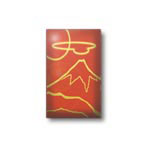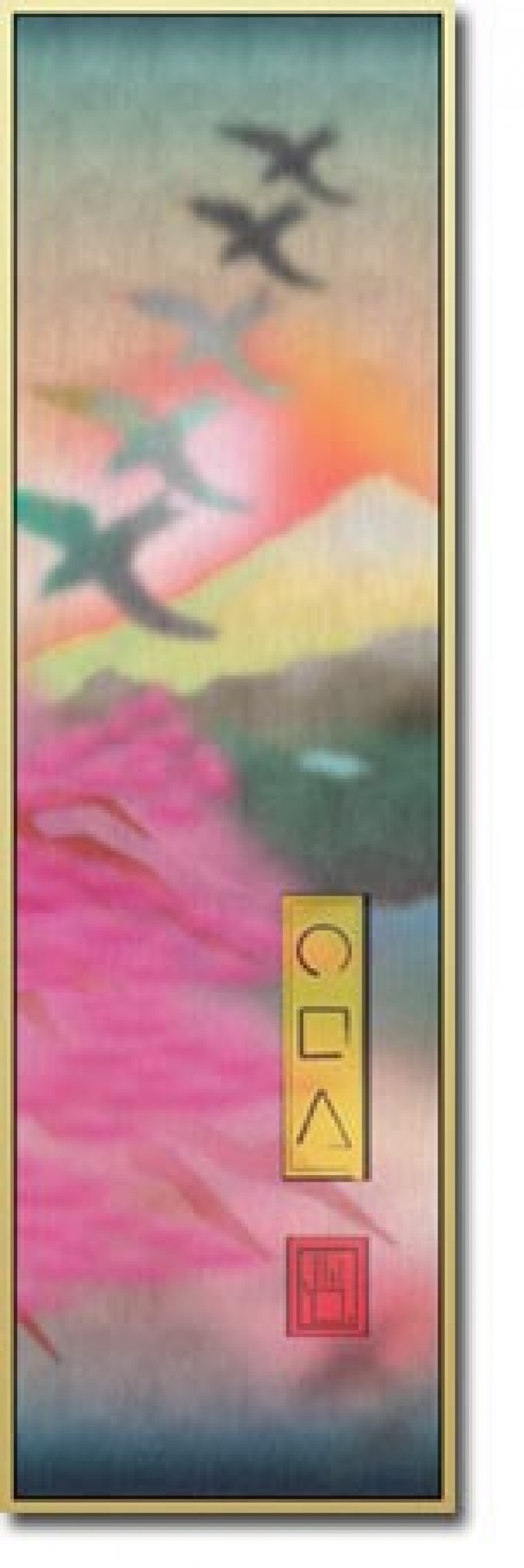On The Way: The Daily Zen Journal
Sermons Part 2
Ma-tsu (709-788)
The Patriarch said to the assembly, “The Way needs no cultivation, just do not defile. What is defilement? When with a mind of birth and death one acts in a contrived way, then everything is defilement. If one want to know the Way directly: Ordinary Mind is the Way!
“What is meant by Ordinary Mind? No activity, no right or wrong, no grasping or rejecting, neither terminable nor permanent, without worldly or holy. The sutra says, ‘Neither the practice of ordinary people, nor the practice of sages, that is the Bodhisattva’s practice.’
“Just like now, whether walking, standing, sitting, or reclining, responding to situations and dealing with people as they come: everything is the Way.
“All dharmas are mind dharmas; all names are mind names. The myriad dharmas are all born from the mind; the mind is the root of the myriad dharmas. The sutra says,
‘It is because of knowing the mind and penetrating the original source that one is called a sramana. The names are equal, the meanings are equal: all dharmas are equal. They are all pure without mixing.’
“If one attains to this teaching, then one is always free. If suchness is established, then everything is suchness. If the principle is established, then all dharmas are principle. If phenomena are established, then all dharmas are phenomena. When one is raised, thousands follow. The principle and phenomena are not different; everything is wonderful function, and there is no other principle. They all come from the mind.
“For instance, though the reflections of the moon are many, the real moon is only one. Though there are many springs of water, water has only one nature. There are myriad phenomena in the universe, but empty space is only one. There are many principles that are spoken of, but ‘unobstructed wisdom is only one.’
“Whatever is established, it all comes from One Mind. Whether constructing or sweeping away, all is sublime function; all is oneself. There is no place to stand where one leaves the Truth. The very place one stands on is the Truth; it is all one’s being.
“Like a cloud in the sky that suddenly appears and then is gone without leaving any traces; also like writing on water, neither born nor perishable: this is the Great Nirvana. It is like a reflection of the moon in water. It functions smoothly without establishing roots.
“Not obliterating the conditioned; not dwelling in the unconditioned. The conditioned is the function of the unconditioned.; the unconditioned is the essence of the conditioned. Because of not dwelling on support, it has been said,  ‘Like space which rest on nothing.’
‘Like space which rest on nothing.’
“The mind can be spoken of in terms of its two aspects: birth and death, and suchness. The mind as suchness is like a clear mirror which can reflect images.
“The mirror symbolizes the mind; the images symbolize the dharmas. If the mind grasps at dharmas, then it gets involved in external causes and conditions, which is the meaning of birth and death. If the mind does not grasp at dharmas, that is suchness.
“Following the principle is awakening, and following phenomena is ignorance. Ignorance is to be ignorant of one’s original mind. Awakening is to awake to one’s original nature.
“Once awakened, one is awakened forever, there being no more ignorance. Like, when the sun comes, then all darkness disappears. When the sun of prajna emerges, it does not coexist with the darkness of defilements. If one comprehends the mind and the objects, then false thinking is not created again. When there is no more false thinking, that is acceptance of the non-arising of all dharmas. Originally it exists and it is present now, irrespective of cultivation of the Way and sitting in meditation.
“Not cultivating and not sitting is the Tathagata’s pure meditation. If you now truly understand the real meaning of this, then do not create any karma. Content with your lot, pass your life. One bowl, one robe; whether sitting or standing, it is always with you. Keeping sila, you accumulate pure karma. If you can be like this, how can there be any worry that you will not realize? You have been standing long enough. Take care!”
Ma-tsu (709-788)
Excerpted from Sun-Face Buddha: The Teachings of Ma-Tsu and the Hung-Chou School of Ch’an- translated by Cheng Chien Bhikshu




There are numerous sutras, teachings of the Masters, and enlightenment stories in the history of Buddhism and Zen. There are times when we read these writings and feel a million miles away from enlightenment, Nirvana, or equanimity. We seem to get fixated on experiencing this state which is alluded to, but really impossible to communicate to anyone. Enlightenment becomes the goal of practice, this state which represents the point of all our practice.
That’s one approach. Usually it engenders a feeling of dichotomy, distance, and an endpoint that perpetually eludes us. What starts off seeming like this respectable aspiration winds up being some kind of benchmark we judge ourselves by. And not everyone achieves enlightenment in the traditional way.
Instead of letting our minds get locked into a gradual process that always seems like the endpoint is off in the distance, why not live “as if” we embody this attainment in the here and now? Take any line that you resonate with and feel the energy and expression of that principle. I’m not talking about imagining any state of being, but really entering the essence and expressing in our lives the truths we hear. Any line could speak to you and spark deep insight.
Just collecting understandings is not It; become the expression of any principle in everyday life.
“The Buddha is merciful and has wisdom.” We can do that; when we feel compassion and forgiveness, this is living mercy. When we are not caught up and have a sense of perspective, this is a part of wisdom itself.
“Just like now, whether walking, standing, sitting, or reclining, responding to situations and dealing with people as they come: everything is the Way.”
Live as if you experience everything being the Way.
In Harmony,
Elana